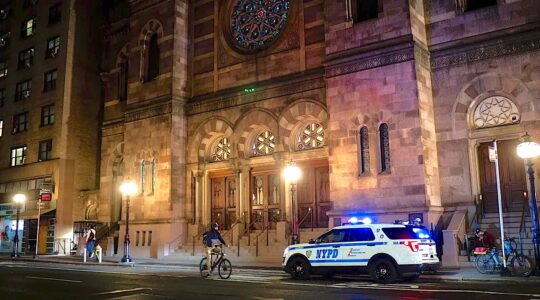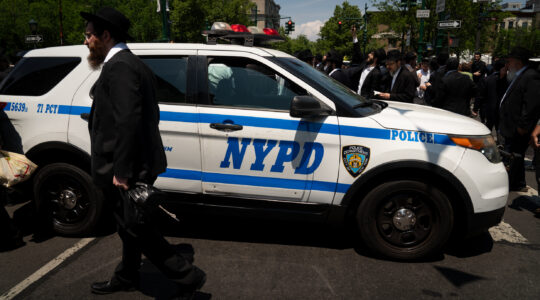That Los Angeles is a car town — perhaps the consummate U.S. car town — is taken as a given by travelers, whose queue at the LAX car rental counter is a time-honored ritual.
But with gas around $4 a gallon and soul-crushing traffic jams, fed-up locals and savvy visitors are increasingly bucking convention, and taking the bus.
The cliché holds that L.A. is not so much a single city as a collection of small towns, and there’s a grain of useful truth in that. California’s biggest city deserves more credit for urbanity, of course. But it’s also far more manageable — not to mention enjoyable — if you plant yourself in one place and amble around a neighborhood on foot. That sprawling maze of freeways and tract houses you see from the airplane best reveals its surprisingly local rhythms and quirky, often striking architecture from a sidewalk-level perspective. And neighborhood bus service is cleaner, more punctual and faster than you’d expect.
The West Side beach towns of Santa Monica and Venice are ideal for this kind of travel. Technically separate municipalities, they share a low-key surf vibe, terrific shopping along pedestrian-thronged main drags, and spectacular Pacific sunsets. And the whole area — which hugs the curving coastline just south of Malibu — is pleasantly compact, offering a walkable and bus-friendly slice of L.A.
This accessibility has made the beach towns particularly attractive for observant Jews, who have settled here in ever-greater numbers. There are dozens of places to daven on Shabbos, of course — but for a truly West Coast experience, try the sunset minyan at Pacific Jewish Center, held right on the beachfront in Venice.
Once you get out of the car in Santa Monica, you realize just how lovely California smells in spring. Eucalyptus, pine, wisteria: all these mingle with salty sea air along the city’s cliffside park, where a rustic walking path wends through brilliant green lawns and tall, shady trees. Several stories below, a stream of cars snakes along the Pacific Coast Highway, while lights twinkle on the old-time pier.
The Santa Monica Mountains — velvety in daylight, purple at dusk — loom majestically over the wide, curving bay, and the fabled beach stretches on forever along a vast and shimmering sea. At sunset each night, small crowds gather at the cliffs’ edges to watch the glowing red orb sink dramatically into the Pacific; it feels like a spontaneous, intimate party, as tourists snap photos and skaters lick cones from the madly popular Angelato Gelato Café, just down on Arizona Boulevard.
Two streets inland is the pedestrian-only Third Street Promenade, a street-turned shopping-center from Wilshire to Broadway. Critics have derided the touristy blandness of its mall chains, but over the years, this erstwhile revitalization project has evolved into what is arguably the West Side’s most vibrant corner.
It turns out that Angelenos were starved for truly public spaces; they’ve made the promenade their own, filling it with street guitarists, tango demonstrations, jugglers, cruising teens, and happy-hour crowds. One the side streets off the promenade you’ll find a selection of local, independent wine bars and cafés.
And a block up on Fourth Street, you can take a culture break: right next door to each other are the Santa Monica Playhouse, a local theater institution in a movie-mad town, and the choral group Cantori Domino, which presents frequent concerts of sacred music. The latter will have a concert on April 17 at the Methodist Church on 11th Street, while the Playhouse is currently showing “Locked and Loaded,” a 2007 dramedy by Todd Susman, to be followed by “The 25th Annual Putnam County Spelling Bee.”
Wandering down to Broadway, a gleaming new complex awaits in what was once a Frank Gehry-designed mall. The mall was beheaded — the roof was torn off — to breathe a little New Urbanist vibrancy into the center, a dowdy assortment of shops that had languished next to the Promenade.
Reborn as Santa Monica Place, it’s now a sort of upscale continuation of its neighbor, except that instead of Gap and Zara you get Nordstrom and Tiffany — and the kinds of pillars, benches and plastic fixtures that connote a mall, despite the sky now visible above.
It feels sterile, but it’s trying hard. An outdoor public movie series, “Movies on the Deck,” shows ’80s classics like “The Breakfast Club” and “Ferris Bueller’s Day Off” on Monday and Wednesday evenings. And the Dining Deck — already popular for its happy-hour bars — will unveil the Market at Santa Monica Place, a gourmet collection of foodie boutiques, on May 20.
Support the New York Jewish Week
Our nonprofit newsroom depends on readers like you. Make a donation now to support independent Jewish journalism in New York.
All of it feels shiny and new compared to Santa Monica’s vintage downtown, where Main Street is the main drag. To get here, stroll along Ocean Boulevard’s art deco waterfront until you hit Pico Bouvelard, then jog a few blocks inland.
Main Street, which cuts through the charmingly low-scale Ocean Park neighborhood, is the indie alternative to the Promenade and Santa Monica Place. Cars cruise lazily by; all the action is on the sunny sidewalks, dotted with organic juice bars, fair-trade coffee shops and hipster dress boutiques. Whether chatting at open-air cafés or pushing prams along rows of kiwi-colored clapboard bungalows, all the latte-sipping moms seem to know each other.
On Saturday mornings, one of Southern California’s most gourmet farmers’ markets takes place right here, at Main Street and Ocean Park Boulevard.
(Farmers’ markets are serious business in foodie-mad L.A., complete with made-to-order tacos and scrumptious fruit varieties; other such markets are found at Arizona and Second Street, and at Virginia Park on Pico Boulevard.) And sustainable living being the mantra around here, this year’s Santa Monica Festival — May 7 at Douglas Park — has a green activism theme, as well as music, food, and local crafts.
At this point, people hot on the trail of Mexican food might jog inland to Lincoln Boulevard — a car-heavy, neon-lit road studded with the kind of old-school Mexican joints East Coasters dream about. But if you continue ambling down Main, in a short while you come into Venice.
Despite its hippie-surfer reputation, Venice these days feels decidedly luxe, but with bohemian trappings and an insider vibe. It’s quieter and also less manicured than Santa Monica, with less street life, narrower lanes and lusher, wilder vegetation.
You’ll hear German, gape at tattooed beach acrobats and fend off bracelet-hawkers along the famous Venice Beach boardwalk, as kooky and international as ever. (The beach itself, unless you hit a rare hot spell, requires a sweater year-round; that water’s cold!)
But just a few blocks inland on Abbott Kinney Boulevard, it’s a decidedly different scene. Hippies have given way to expensively dressed professionals, and the shops here have a rarified, museum-like feel.
To my mind, Venice lacks the lively street life of Santa Monica. But it has something uniquely rewarding for the pedestrian visitor: canals. Just south of Venice Boulevard is an enchanting mini-neighborhood of narrow marine byways, crisscrossed by arched footbridges, lined with tropical gardens and magazine-perfect bungalows.
It’s a California only available to the sidewalk-level visitor; zipping along in a car, you would never know such loveliness exists. And when you’re done exploring the canals and gardens, you can hop on Santa Monica’s Big Blue Bus and get right back to where you started — 20 minutes and 75 cents later.
Resources:
Santa Monica Playhouse:
www.santamonicaplayhouse.com
Pacific Jewish Center:
www.pjcenter.com
Santa Monica Place movies:
www.santamonicaplace.com
The New York Jewish Week brings you the stories behind the headlines, keeping you connected to Jewish life in New York. Help sustain the reporting you trust by donating today.




